

Tips and Tricks for HSC Creative Writing
Everyone wants to do well in creative writing, but oftentimes we do not know where to begin.
The typical advice we’re given to improve our imaginative pieces include: “just read more!” or “just write more”. Although these are ways by which we can really enhance our creative skills, I have decided to compile a series of tips and tricks that have allowed me to construct full-scoring imaginative pieces in the hopes of providing students a deeper insight into the key characteristics of successful stories.
I too was afraid and intimidated by creative writing assessments as I wouldn’t consider myself a particularly strong imaginative writer, but through practice, I have been able to develop a relatively robust narratological framework and approach to this mode of writing that has worked consistently well for students.
Once you realise that creative writing, like any other form of non-fictional writing like discursive, persuasive, or formal essays, is defined by a very clear set of features, this makes our job much easier to accomplish.
1. Subtlety in your storytelling is important
You should always treat your reader as if they know exactly what is going on in the story. Don’t underestimate your reader’s abilities to abstract meaning from your story or their capacity to extract the underlying purpose of the work and the reasons why it is constructed the way it is. Oftentimes, students are afraid that their stories are too abstract and that as a result, their reader will not be able to understand what is going on the work.
However, for the most part, I see that students tend to be too explicit or ‘overt’ in their storytelling to the extent that their work ends up suffering from a lack of nuance. For instance, don’t use similes if you are going to state in plain terms the deeper meaning behind it e.g., “With each step forward he made, he felt as though time was passing by quicker and quicker.” In this instance, there isn’t anything terribly wrong with how it has been written, but it does lack skilful construction in the sense that it doesn’t have any sense of ambiguity in terms of what the idea behind the sentence is.
We always want to give readers enough space to interpret the work and extrapolate meaning from it based on what they personally think the story is about. This means that rather than having each sentence in your work be an explicit link back to your idea, you should be considering how all elements of your work are working together in a cohesive way to represent your overarching idea, thus allowing room for more subtlety and ambiguity in the particular sentences and phrases you use to construct your piece.
A much better example, if you were trying to represent the idea of passing time, would be something along the lines of: “He imagined what it feel like to no longer worry about the past or future, what it feel like to live in a world where there was nothing but ‘forever’ and ‘now’, to stop chasing things that had either already passed or had not yet existed.”
In this second example, despite it being slightly more ambiguous than the first in terms of its meaning, it feels much more effective primarily because it has subtlety (something a lot of skilled writers can do because the meaning of the sentence will be derived from how it interacts with other important elements of the work itself like the plot, characters, setting etc.).
2. Always consider the elements of narrative and how you will utilise each of them to represent your idea
Although this seems like a rather straightforward tip, students tend to forget the basic building blocks of creative writing. We need to appreciate that success in creative writing fundamentally springs off one’s understanding of narratology i.e., how we use each element of storytelling to represent the overarching ideas of our work.
Considering this, we need to think about what characters we are going to create and how each of them will embody some part of our larger idea or concern, our plot, and the progression of the story itself (i.e., what happens within the story and how this represents the idea at the core of our creative piece), as well as the setting (i.e., how will we create a setting or landscape that helps in the representation of our purpose).
In addition to this, we need to think about the specific language devices and literary techniques that will assist the portrayal of our concepts (e.g., metaphor, simile, extended metaphor, symbolism, motif, allusions, paradox, contrast, self-reflexivity, syntax, diction, lexical chains etc.).

3. Keep things simple

My final tip would have to be the most neglected pieces of advice in English – which is to ‘keep it simple’. Whilst writing their imaginative pieces, students often get carried away by the complexity of their language, driven by the belief that the more ‘impressive’ their language is, the more marks they will gather from their teacher.
Take it from me – this is not the case. Based on experience, and the many stories I have read from students over the past five years, a consistent trend I have noticed is that full mark creative pieces aren’t necessarily those which have the most complex language. Rather, ‘good’ stories are typically fashioned with relatively ‘simple’ words, with the differentiating factor contributing to their success being the uniqueness in how they actually combine these words together.
Put simply, the words in isolation aren’t that impressive, but the coordination of these words and the way they are joined together to represent ideas is what is distinct (whether that be in how certain words are incorporated into metaphors or in figurative expressions, used as motifs, or even objects being used as symbols). An example of this is given below:
Verbose language but ineffective articulation: “We are miniscule entities, both confounded and spellbound by the nature of existence, yet continuously seeking to decrypt the answer to life.”
Notice how this sentence feels as though the student has simply looked up a synonym for each word. The sentence feels very unnatural and quite clunky since each word is so long. Whilst the vocabulary, in isolation, is great (and there is nothing wrong with having a very diverse and far-reaching vernacular), we want to avoid this in our creative pieces.
This is because imaginative writing is not a competition in who can implement the most difficult words into their stories but is rather a game of how we can represent an idea in the most effective and unique ways.
A more effective sentence might look something like this: “We’re just humans, I thought. Tiny creatures roaming around on a spinning ball, confused and perplexed, but always hopeful that there is something better out there to reach out our arms for.” Notice how the language here is much more simplistic yet captures the underlying idea of the previous sentence in a much more unique and interesting way.
Overall, creative writing can be a tricky form to navigate. Since we cannot escape this form of writing in both junior and senior high school, as well as the HSC, it is vital we have a firm understanding of the dos and don’ts. That way, we will be able to better articulate our stories and craft narratives that are effective and powerful.
.png)
Get the unfair advantage. DON't MISS OUT.
Enquire now.

Press Enter to search
A Step-by-Step Guide to Achieving a BAND 6 in Creative Writing
Need to elevate your creative writing? Learn the foolproof formula for writing a full-mark creative response!
8 months ago • 6 min read
I think we can all agree creative writing is the hardest and most annoying part of year 12 English. I mean it is so subjective, what's right or wrong?
Well lucky for you, I've been there, a struggling high school student tired of getting bad creative marks. Let me show you how I turned my creative marks around to get a 99+ Atar and how you can too!!
1. READ READ READ!!!
If you keep receiving feedback that says your work is cliché, generic, lacks substance and misuses literary devices the only remedy is reading . There is a reason the syllabus shoves texts down our throats. It's because by understanding the different ways other writers communicate ideas we ourselves become better communicators. By reading outside of your prescribed text you will be exposed to a new set of writing tools your peers wouldn't know about. You can see the recurring writing features well-renowned authors use and most importantly, you can gain worldly inspiration for your own text. Ideally, you want to be reading short stories, discursive and persuasive because that is what the syllabus demands of you.
Some recommendations are;
- Samsa in Love by Murakami
- The Second Bakery Attack by Murakami
- There will come soft rains by Ray Bradbury
- Hills like white elephants by Ernest Hemingway
- The Lottery by Shirely Jackson
Find an author whose writing style you really like and try mimicking their language and syntax in your own work.
2. FIND YOUR PURPOSE
The marking criteria for HSC Module C creative writing to score a Band 6 requires you to:
…consider purpose and audience to carefully shape meaning.
No matter how good your motifs or metaphors are, unless you have a strong and clear message or purpose permeating your writing you will not be able to access band 6 marks. When about to write a short story, discursive or whatever, the first thing I want you to think about is:
What is the message you want to communicate in your writing
When coming up with your purpose/idea don’t overcomplicate it. Pick something simple and personal to you. You want to keep your ideas easily adaptable to different stimuli and something relatable to both yourself and the reader. Some examples are;
- The importance of reading
- The need for belonging and human connections
- The irrational and obsessive nature of love
Think of the texts that you have studied in other modules, What are the ideas and messages being put forward there? You will notice that most of them examine fundamental aspects of human nature and enlighten audiences with a new perspective. That is what you should be doing too!
Let’s say you want to write a story about a child in an immigrant family. If that was the limit of your ‘idea’ you won’t be able to reach a band 6. What is the purpose behind it? Why do you want to explore this experience? A more in-depth idea plan would be "I want to write about a child experiencing alienation within an immigrant family to highlight the importance of culture to a sense of identity and belonging."
3. PLAN YOUR STRUCTURE
Once you have your Band 6 purpose picked out, you now have to figure out how you want to communicate your purpose.
This means picking a writing style (imaginative, persuasive, discursive), developing a main character and conflict, and then selecting the point of view that would explore this character and conflict.
Write in a way that shows an understanding of how the text creates meaning.
There is no right or wrong option here. It is all about how well you understand and can justify your writing decisions (this is important for the reflection). When creating your response you want to be aware of all the features present and how it influences the piece and its meaning.
There are two things that I would recommend to ensure you are on the right track though. For plot structure use the plot pyramid. You will notice all great movies and novels follow this sequence. Why? Because it works every time to engage and compel audiences through the story.
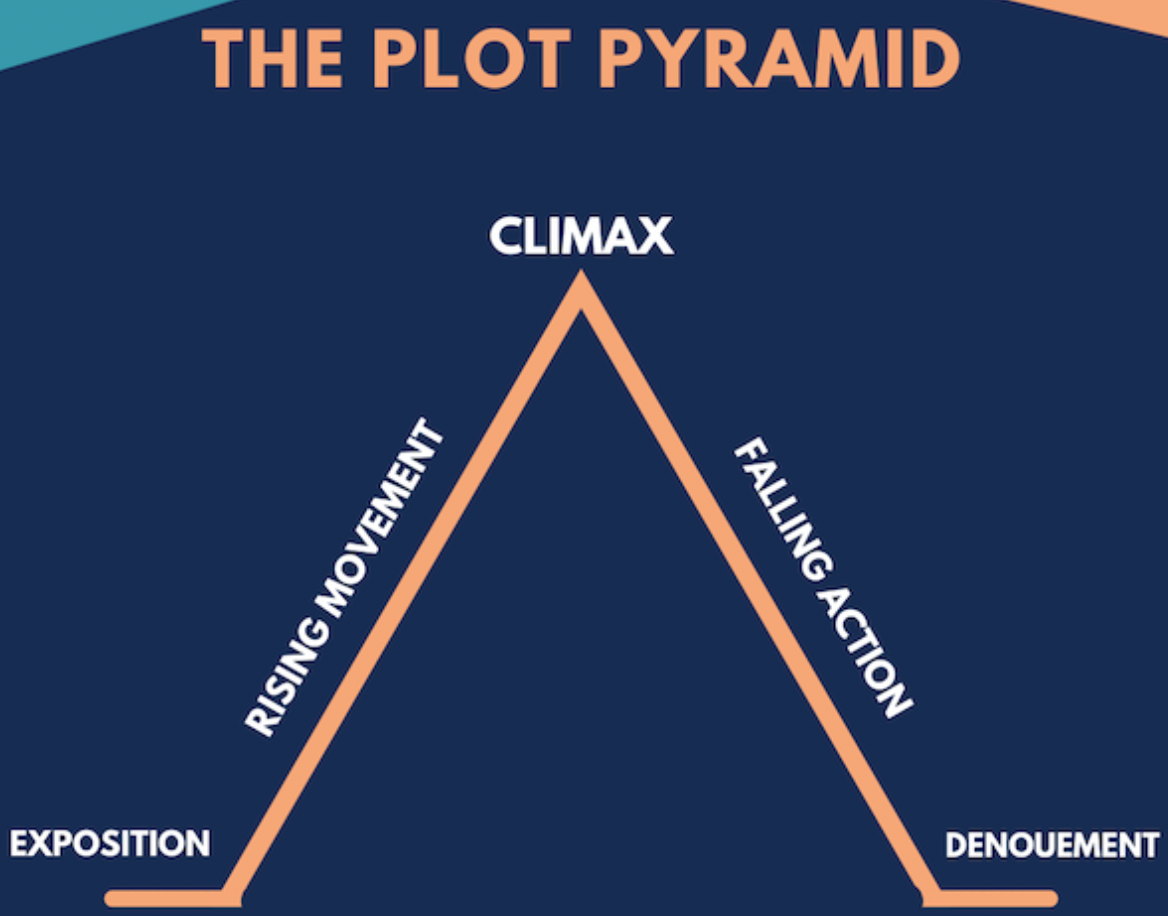
The second thing is to develop dynamic characters. Characters that evolve throughout your story. This doesn't have to be physical, or even a big change. It could be as simple as a haircut or even just a small change in mindset. Essentially you want to show your character to have a change in perspective because that will in turn compel your reader to have that same change. This is easily done if you have carefully thought out your character.
- What is their personal story or background?
- What are their values and beliefs?
- What is the internal conflict they struggle with?
4. WRITE WRITE WRITE
- Use a simple setting (and try to stick to only one scene/setting in your short story you won't have time to delve into more).
- Concentrate on developing one dynamic and 3-dimensional protagonist before you try and introduce other characters. (And only introduce them if they are integral to the storyline. NPC's (or surface-level side characters) do not add value and will only disengage your audience.)
- Show don't tell. For example instead of "I heard footsteps creeping behind me which made me more scared" leave room for the reader's imagination and say "I heard a crunch behind me and my heart turned to sand, rising up into my throat." Instead of "we were really close" say "his smell reminded me of my childhood treehouse."
- Play with word order and vary syntax (punctuation is super important). Many people make the mistake of just using complex sentences, which causes their pieces to feel cluttered and clunky to read. Use short sentences as well to structure tension and emotions.
- The secret of good writing is to simplify and strip every sentence to its cleanest component. Only add the adjectives and descriptions that are integral to your plot line. DON'T GET TOO CAUGHT UP IN FLOWERY LANGUAGE.
5. EDIT AND FEEDBACK
It is highly likely your first draft will not be band 6 material, but that's normal. J.K Rowling took hundreds of drafts to get to the Harry Potter we know and love. And it took me a few drafts before getting a satisfied nod from my English teacher. A Band 6 response will take a series of feedback, edits and rewrites. Show it to your teachers, your friends, and your parents and importantly ask them if they understand the message you are trying to put forward because if they don't the markers reading in a time crunch definitely won't. You don't need expert opinion to make your piece better. You are looking to improve your clarity and communication to everyone .
In addition to this I always find annotating your own writing helps balance and improve the sophistication of literary devices. You should also be reading your piece out loud to help identify syntax and grammatical errors that desperately need to be reworded.
Remember your goal is to use the power of words to communicate a profound idea to the world as engagingly and with as much clarity as possible!!

Want more personalised tips to drastically improve your English mark? A private tutor can make the biggest difference!
Written by KIS Academics Tutor for HSC English, Thao Peli Nghiem Xuan. Thao received an ATAR of 99.55 and is pursuing a Bachelor of Mechanical Engineering at the University Of New South Wales. You can view Thao's profile here and request her as a tutor.
Spread the word
The ultimate 99+ atar 30-day study guide, how to write full mark answers for hsc english short response (with examples), keep reading, how to write a band 6 module b critical study of literature essay, how to respond to short answer questions in vce english language, how to craft a band 6 mod a textual conversations essay, subscribe to our newsletter.
Stay updated with KIS Academics Blog by signing up for our newsletter.
🎉 Awesome! Now check your inbox and click the link to confirm your subscription.
Please enter a valid email address
Oops! There was an error sending the email, please try later
MAD MAY SALE! 15% OFF ALL PRINT PRODUCTS UNTIL 31 MAY! USE CODE: MAY15. SHOP NOW !

A Guide to Short Story Creative Writing
Saturday 12th, August 2023
Once upon a time… you may have started a short story like this. Then, you may have concluded with “and they lived happily ever after.” In high school, this won’t get you your fairytale assignment or exam grade.
In this article, I go through the features of a creative short story. I have also provided some tips on how to write a short story exposition and ending with examples to demonstrate.
Features of a Short Story
In media res.
In media res is Latin for “in the middle of things.” This means that you start your story in the middle of the action. As you keep writing, you can then give more information about the characters, setting and conflict through the subsequent events, or even through flashbacks.
The benefit of the in media res structure is that it makes your story hook more exciting because a crucial, action-packed event is taking place. Think about whether it’s more captivating to start a story with your character getting out of bed or chasing a thief.
Linear or Non-Linear Structure
Often, due to word limits, short stories are written in a linear structure, where the events are told in chronological order with no deviations. That being said, you can add flashbacks or flashforwards.
Flashbacks take the reader back in time to show what occurred in the past. Flashbacks can be an actual scene or just be a character’s thoughts in the form of a memory. Use flashbacks when you want to give more context around what’s happening in the present. Flashforwards are the opposite as they transport the reader into the future to shape their expectations for what is to come.
Flashbacks can be an actual scene or just be a character’s thoughts in the form of a memory.
Events and Backstory
A common mistake in short story writing is trying to pack in too many events or not providing enough backstory to set the scene. This makes it confusing for the reader.
Focus your story on what is important and make it easy enough to follow. Remember, just because the story makes perfect sense to you doesn’t mean it will make sense to others. Put yourself in the shoes of someone who has never heard anything about your story before.
Just as you should try to limit the number of events in your story, you should also try to minimise the number of characters. This will also help you to stay within the word limit and avoid reader confusion. Always name your characters.
Point of View
Point of view is the perspective through which your story is told. It shapes how the reader experiences the story, whether it be first person, second person or third person. Here is an outline of each of these points of view:
First Person: The narrator is a character in the story. “I” and “we” are the relevant pronouns.
Second Person: You are brought into the story as a character. “You” is the relevant pronoun.
Third Person: The narrator is describing the action from an outside perspective. “He/him,” “she/her” and “they/them” are the relevant pronouns.
Ensure you keep your pronouns consistent. It is easy to accidentally switch between points of view. In short stories, the best and easiest option is to only include one perspective. Including more than one point of view or jumping between the points of view of different characters complicates your story and makes it confusing.
You can write a story in past, present or future tense, though the latter is rare.
Here is an outline of each of these tenses:
Past: The events already happened. Think of words ending in “ed.”
Present: The events are happening now as the story is being told.
Future: The events have not happened yet. The story outlines what “will” happen.
Whichever tense you choose, ensure you stay consistent. Inconsistent tense is both incorrect and confusing.
Show, Don't Tell
Put simply, “show, don’t tell” means to avoid spelling out everything. If the point you are trying to make is that it was stormy outside, you wouldn’t say this exactly because that would be telling. Instead, you would help the reader discover this for themselves through the actions, dialogue, thoughts and senses you include. Here are some examples:
Showing: It was stormy outside.
Telling: Golf balls pounded the tin roof and blinding flashes lit the inky sky as the children huddled under their bed.
Showing: She was scared about giving the speech.
Telling: Her fingers shook as she stood at the podium, gulping as her eyes flicked between her speech notes and the dark silhouettes below.
I was taught to think of this rule as “show, don’t ONLY tell.” This is because you do need to tell sometimes, especially when you want the story to move along quickly. Your story would become too long-winded and hard to digest if you don’t include any telling.
I was taught to think of this rule as “show, don’t ONLY tell.” This is because you do need to tell sometimes...
Figurative Language
It’s always a good idea to include figurative language to make your creative writing more interesting and tick off the assessment criteria requirements. Examples of figurative language include similes, metaphors, personification, hyperbole, alliteration, onomatopoeia and idioms.
Short Story Example
The short story excerpts in the sections below are part of a short story I wrote in Year 11 English. We had to write a story in the post-apocalyptic genre. I chose to base my story on the Amazon rainforest repossessing land that was previously under the control of humankind. I wrote my story in past tense from the first person perspective of my protagonist.
How to Write a Short Story Exposition
As mentioned previously, try to start your short story in the middle of the action. Give some backstory so the story makes sense, but don’t give all of the backstory at once without any action.
Example Short Story Exposition:
It was as if the world was in fast forward and my body was on pause. The creepers and tree branches were crawling towards me rapidly, but my body was failing to react. Thick vines strangled my neck, while knotted roots swamped my body, chaining me to the Earth. A voice was screaming at me, a barely decipherable roar amid my desperate gasps for air. In the next moment I was back inside my body again, no longer watching from afar. A face loomed above me, wide-eyed and frantic. He was wrenching at the foliage enveloping me and I was struggling against the force of nature. But nature was intent on fighting back; on seeking revenge. Before I could manage a scream, a moss-covered vine crawled over my entire face, plunging the evergreen world into darkness.
How to Write a Short Story Ending
Make sure you give the reader a sense of satisfaction at the end of the story; this is why it is called a resolution. However, this doesn’t mean your ending can’t be implicit.
Example Short Story Ending:
From my perch two-hundred-feet above ground, I could see that the rainforest extended in every direction as far as the eye could see. Josh sat opposite me, balanced on another horizontal branch stemming from the Kapok. In the distance was the glimmer of the Amazon river, winding through the trees. I hadn’t yet asked Josh how I came to be where I was, rather than a flattened corpse resting at the base of the Kapok’s trunk. I didn’t need to. My focus was on the Amazon rainforest, the lungs of the world, extending towards the horizon in every direction. Hours beforehand I had believed that the end of the world had occurred. In a sense, I guess it had. But with time I taught myself to see that the end of the familiar was not the end of everything. It was simply the beginning of a new normal. And in this new evergreen world, I could see only beauty.
Hopefully, this article has shown you that the possibilities in creative short story writing are endless. Try to think beyond the fairytales from your childhood to create something new.
Get creative, and good luck!
Q: Can I start a short story with dialogue instead of action to grab the reader's attention?
A: Absolutely! Starting with dialogue is an effective way to grab the reader's attention. It's all about choosing a compelling opening that draws readers into the story immediately.
Q: Is it okay to include multiple points of view in a short story?
A: While it's technically possible, it's generally advisable to stick to one point of view in a short story to avoid confusion. Multiple points of view can complicate the narrative and make it harder for readers to follow. It’s usually reserved for longer stories.
Q: How do I know if I'm showing enough and not telling too much in my writing?
A: A good rule of thumb is to aim for a balance between showing and telling. Use showing to create vivid imagery and engage the reader's senses, but don't shy away from telling when it's necessary to move the story forward efficiently. When writing a short story, your word count will be limited, so don’t try and add descriptive language for everything!
Q: Is it necessary to have a clear resolution at the end of my short story?
A: While a clear resolution can provide a sense of closure for readers, it's not always necessary, especially if you're aiming for an open-ended or implicit ending. Focus on wrapping up the main storyline and leaving readers with a satisfying conclusion or thought-provoking idea.
Q: How many characters should I include in my short story?
A: There is no set amount for the number of characters you have in your short story. You can develop a great story with just one character! However, since you’re writing a short story, limiting the number of characters can help keep your story focused and prevent reader confusion. Aim to include only essential characters who contribute to the main plot or theme of the story.
Q: What should I do if I'm struggling to come up with ideas for my short story?
A: If you're struggling with ideas, try brainstorming, mind mapping, or drawing inspiration from your own experiences, interests, or current world events. Don't be afraid to experiment with different genres, themes, and writing styles until you find what works for you.
You must be logged in to leave a comment
- format('Y-m-d H:i:s')" class="comments-date"> 9 months ago ✓ Link copied!
I have read a lot of useful information
- format('Y-m-d H:i:s')" class="comments-date"> 1 year ago ✓ Link copied!
Hii do you have any tips of the Movie High Ground as we are doing that for the creative SAC on Monday?

What does it actually mean to “study smart”?

How to study in high school - the 'dos' and 'don'ts'

Spare 5 minutes? Here are 7 quick study strategies

How to get more out of your textbook

The benefit of asking questions in high school

Your Year 12 study questions answered!

Sponsored by the Victorian Government - Department of Education
Early childhood education: a career that makes a difference
Early childhood education is seeing growth like no other profession – creating thousands of jobs available over the decade. With financial support to study at university and Free TAFE courses available, there’s never been a better time to become a kinder teacher or educator.
Guide to Module C – The Craft of Writing
DOWNLOAD THE RESOURCE
Resource Description
This is a great guide for all things Craft of Writing – strategies for breaking down the stimulus, using prescribed texts as influences, etc.
Just like any section of the English Advanced HSC Exam, Module C accounts for 20 marks. It has been heavily revamped with the new syllabus and is now more of a skills-based module. This is the module that relies heavily on improvisation and your ability to think on the spot, more so than others. It’s probably the hardest to revise for (except maybe the Reading Task component of the Common Mod), and is by far the module with the greatest range of possible questions.
But with anything in the HSC, there are certain rules and guidelines that can be followed to maximise yourmarks and score in the top bands. I speak on this topic with no authority, qualification, or aptitude, which means it should suit perfectly for English (because the key to English is to sound like you know what you’re talking about without knowing anything). These aren’t universal rules, and you might disagree with many of them. The aim here is that you can get something out of this guide that helps you.
Report a problem
Popular HSC Resources
- Speech on George Orwell ‘1984’ – Human Experiences
- How To Survive the HSC
- One Night the Moon – Analysis (Video)
- 2020 – Physics – PHS (Trial Paper)
- Business Studies Influences on HR (Quiz)
- Sci Ext – Portfolio Pack
- 2020 – Science Ext – Exam Choice (Trial Paper)
- Domino’s Marketing Case Study
Become a Hero
Easily become a resource hero by simply helping out HSC students. Just by donating your resources to our library!
What are you waiting for, lets Ace the HSC together!
Join our Email List
No account needed.
Get the latest HSC updates.
All you need is an email address.

Writing Nestling

How To Improve Creative Writing (18 Effective Ways)
Embarking on the journey to improve one’s creative writing is like setting sail into an uncharted sea of boundless imagination and linguistic exploration.
Creative writing, a realm where words transform into vivid narratives, characters come to life, and emotions are painted across the pages, is a skill that thrives on constant growth and evolution.
In this guide, we will traverse the landscape of creative writing, delving into its various forms, mastering the craft, and unlocking the secrets to becoming a more skilled and imaginative writer.
Whether you’re a seasoned wordsmith seeking refinement or a budding writer just beginning your literary voyage, the path to improvement is a rich tapestry waiting to be woven, where inspiration knows no bounds, and storytelling becomes an art form.
So, fasten your literary seatbelt, for the journey to enhance your creative writing prowess is about to commence.
Table of Contents
How To Improve Creative Writing
To improve your creative writing skills, follow these steps:
Read Widely:
Read a diverse range of literature, including fiction, non-fiction, poetry, and different genres. This exposure will help you understand various writing styles and techniques.
Write Regularly:
Practice writing consistently. Set aside dedicated time each day or week to write. The more you write, the better you’ll become.
Expand Your Vocabulary:
Work on building a rich vocabulary. Learn new words, their meanings, and how to use them effectively in your writing.
Study Grammar and Punctuation:
A strong grasp of grammar and punctuation is essential. Review the rules and practice to avoid common mistakes.
Create a Writing Routine:
Establish a routine that works for you. Whether it’s early in the morning, late at night, or during lunch breaks, find your optimal writing time.
Outline Your Ideas:
Plan your writing in advance. Create outlines, mind maps, or notes to organize your thoughts before you start writing.
Set Writing Goals:
Define clear goals for your writing projects. Whether it’s completing a short story , novel, or a series of articles, having goals keeps you motivated.
Seek Feedback:
Share your work with peers, writing groups, or mentors. Constructive feedback helps you identify areas for improvement.
Revise and Edit:
Writing is rewriting. After you’ve completed a draft, revise and edit your work for clarity, coherence, and style.
Experiment with Style and Genre:
Don’t be afraid to try different writing styles and genres. Experimentation can help you discover your unique voice.
Read Aloud:
Reading your work aloud can help you catch errors, awkward phrasing, and improve the rhythm of your writing .
Be Observant:
Pay attention to the world around you. Observing people, places, and events can provide inspiration and authenticity to your writing.
Overcome Writer’s Block:
When you’re stuck, try free writing, brainstorming, or taking a break to refresh your creativity.
Stay Inspired:
Surround yourself with inspiring sources, whether it’s art, nature, music, or conversations. Inspiration can fuel your creativity.
Edit and Proofread:
Once you’ve completed your writing, thoroughly edit and proofread it for spelling, grammar, and punctuation errors.

Publish and Share:
Share your work through blogs, social media, or submit it to publications. Public sharing can provide valuable feedback and exposure.
Learn from Feedback:
Take feedback seriously and use it as a tool for improvement. Analyze critiques to enhance your writing skills.
Keep Learning:
Writing is an ongoing journey. Continuously seek to learn and grow as a writer by attending workshops, reading about writing, and experimenting with new techniques.
Remember, improving your creative writing skills takes time and dedication. Patience, persistence, and a willingness to learn are key to becoming a better writer.

Understanding Creative Writing
Understanding creative writing is like embarking on a journey into the boundless realm of imagination, where words become brushstrokes, painting the canvas of your mind with vivid worlds, complex characters, and emotions that dance off the page.
It’s a realm where you’re the architect of reality, bending the rules of ordinary language to conjure extraordinary stories that tickle the senses and stir the soul.
It’s about wielding the power of narrative to shape destinies, provoke thought, and make hearts skip a beat.
In the realm of creative writing, you’re both the magician and the audience, crafting spells with sentences that transport you and your readers to places unknown, unraveling mysteries, and exploring the infinite possibilities of human expression.
Different forms of creative writing
Creative writing encompasses a kaleidoscope of diverse forms, each a unique facet of the literary universe.
There’s the enchanting world of fiction, where novelists weave intricate plots and multidimensional characters that become your companions on thrilling adventures.
Poetry, a mesmerizing tapestry of words, paints vivid imagery and emotion in the concise space of a few lines.
Non-fiction is a realm of truth and authenticity, where writers illuminate reality with memoirs, essays, and journalistic narratives. Screenwriting brings storytelling to life on the silver screen, capturing the hearts and minds of audiences worldwide.
These forms are but a glimpse into the labyrinth of creative writing, where the only limit is the boundaries of one’s imagination.
Elements of creative writing
The elements of creative writing are the building blocks that breathe life into words , transforming them into vibrant stories.
At the heart of any creative work lies the intricate dance of plot, where conflicts and resolutions unfurl like a well-orchestrated symphony.
Characterization paints portraits of individuals, each with their own quirks and depths, making them unforgettable to the reader.
Setting, a crucial backdrop, provides the stage upon which these tales unfold, influencing moods and actions.
Themes thread through the narrative like a hidden river, adding depth and purpose, while style is the unique fingerprint of the author, infusing the work with their voice and perspective.
These elements, in concert, give creative writing its compelling complexity , inviting readers to embark on journeys that resonate with their hearts and minds.
Cultivating a Creative Mindset
Cultivating a creative mindset is akin to tending to the most wondrous of gardens—the garden of the imagination.
It’s about donning the gloves of curiosity and nurturing the seeds of inspiration, coaxing them to bloom into vibrant ideas that dance in the sun-dappled meadow of your thoughts.
In this garden, writer’s block withers under the warmth of persistence, and the weeds of self-doubt are plucked away with unwavering belief in your creative potential.
It’s a sanctuary where meditation and mindfulness are the water and sunlight, ensuring that the fruits of your imagination grow ripe and abundant.
In this verdant oasis, you are the creator and the caretaker, shaping the tapestry of your mind into a masterpiece of creativity that never ceases to blossom with new ideas.
Overcoming writer’s block
Overcoming writer’s block is like finding a hidden passage out of a labyrinth of your own thoughts. It’s the art of breaking free from the stranglehold of a blank page and transforming it into an open canvas.
Sometimes, the most formidable adversary is not the lack of ideas but the daunting prospect of beginning. To conquer this nemesis, one must navigate a myriad of techniques, from freewriting and brainstorming to changing the physical environment, in order to unearth the buried treasure of creativity within.
It’s a mental jigsaw puzzle where pieces of inspiration are scattered, and solving it involves patience, resilience, and sometimes simply allowing your mind to wander until it stumbles upon that elusive spark that will ignite your words.
Overcoming writer’s block isn’t just a battle won; it’s a gateway to the ever-expanding universe of storytelling, waiting to be explored with fervor and imagination.
Developing a writing routine
Developing a writing routine is akin to crafting a symphony out of the everyday humdrum. It’s the art of carving out sacred moments in the day, allowing the muse to speak amid the cacophony of life’s demands.
A writing routine is the scaffold that supports the architecture of creativity, providing the structure and discipline necessary for the magic of storytelling to flourish.
Whether it’s the first light of dawn or the stillness of midnight, these designated hours become the writer’s sanctuary, the place where the mind opens up like a treasure chest of ideas, and words flow like a river.
It’s in these moments of consistency that the craft evolves, enabling writers to hone their skills, unravel narratives, and beckon inspiration at will.
Ultimately, a writing routine is a personal ritual that weaves creativity into the fabric of daily existence, transforming the ordinary into the extraordinary, one word at a time.

Mastering the Craft
Mastering the craft of writing is like harnessing the mystical forces of language to conjure entire universes from the ink of your pen.
It’s a lifelong journey of delving into the labyrinth of words, where each sentence becomes a brushstroke, and every paragraph a brush dipped in the palette of emotions.
It’s an alchemical process, where you transmute raw ideas into literary gold, refining your art through an unending cycle of creation, revision, and relentless pursuit of perfection.
Every metaphor, every plot twist , and every character’s whisper becomes a note in the grand symphony of storytelling, where the crescendo is the moment you realize you’re not just a writer; you’re a sorcerer, weaving spells with every keystroke, capturing the hearts and minds of readers with the magic of your narrative.
Vocabulary and Language
Vocabulary and language are the enchanting threads that weave the tapestry of storytelling. A writer’s arsenal of words is akin to a painter’s palette, each word a unique hue that, when skillfully blended, creates vivid imagery and evokes powerful emotions.
A rich and varied vocabulary is the cornerstone of effective communication, allowing writers to express the nuances of thought and sentiment with precision and eloquence.
Language, on the other hand, is the vessel that carries these words, shaping the tone and rhythm of a narrative.
The beauty of this interplay lies in the writer’s ability to select the perfect word, the ideal phrase, and the most evocative metaphor, thereby sculpting a literary masterpiece that resonates with readers, captivating their senses, and transporting them to worlds of imagination and wonder.
In the realm of creative writing, vocabulary and language are the keys to unlocking the full spectrum of human experience and imagination.
Writing Techniques
Writing techniques are the chisels and brushes of the wordsmith, essential tools that sculpt and paint the narrative.
They encompass a spectrum of strategies that shape the flow and impact of a piece of writing. “Show, don’t tell” is the art of letting readers experience a story through sensory details and actions, fostering a deeper connection.
Crafting authentic dialogue breathes life into characters, allowing them to converse and reveal their personalities naturally.
The choice of point of view, whether first person, third person, or omniscient, defines the lens through which the reader perceives the tale.
These techniques, like a craftsman’s skills, enable writers to craft stories with finesse, immersing readers in vivid landscapes, relatable characters, and intricate narratives, making the written word a portal to realms of imagination and emotion.
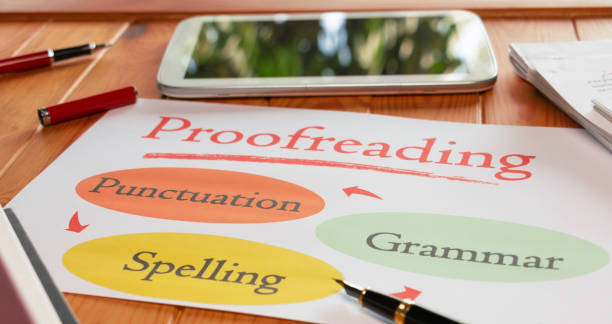
Reading as a Writer
Reading as a writer is akin to peering behind the scenes of a magnificent stage production to witness the magic of storytelling in its purest form.
It’s a journey where the reader transforms into a literary detective, dissecting the prose, unraveling the plot, and examining the intricate brushstrokes of the author’s craft.
With each turn of the page, a writer learns the secret language of pacing, character development, and dialogue that is whispered through the text.
It’s an immersive masterclass that teaches the orchestration of tension, the symphony of foreshadowing, and the art of unveiling mysteries.
In this dual role of reader and writer, one discovers that every book is not just an escape but an invitation to the backstage, where the invisible threads of narrative manipulation are spun, inspiring the storyteller within to reach new heights and craft unforgettable tales.
Analyzing literature
Analyzing literature is akin to embarking on an archeological expedition into the layers of human expression and experience.
It’s a fascinating journey where each page holds the whispers of the past and the echoes of the author’s soul.
As one delves into the intricacies of a literary work, it’s like decoding a cryptic message, revealing the hidden treasures of symbolism, theme, and narrative structure.
Every word, sentence, and character becomes a clue in a grand puzzle, inviting you to explore the profound depths of the human psyche and society.
In the process of literary analysis, readers not only unearth the intellectual and emotional nuances of a text but also gain a profound appreciation for the artistry of the written word, for it is in these revelations that the alchemy of storytelling is unveiled, proving that literature is not merely ink on paper, but a mirror reflecting the intricate mosaic of human existence.

Learning from other authors
Learning from other authors is akin to a masterclass in the art of storytelling. It’s an exquisite journey of exploration, where you walk in the footsteps of literary giants, witnessing their genius unfold across the pages of their works.
These authors, like mentors from afar, offer invaluable lessons in character development, plot structure, and the delicate dance of language.
With each book you read, you glean insights into the diverse ways authors craft their narratives, be it the lyrical prose of one or the gripping dialogue of another.
Their stories serve as templates, guiding you in understanding the subtleties of storytelling, nurturing your creative instincts, and sparking that inner fire of inspiration.
In the pages of their books, you find not just tales, but the wisdom of those who have paved the way, ready to illuminate your path as you embark on your own journey of writing.
Building a personal library
Building a personal library is like assembling a treasury of knowledge, imagination, and soul. Each book, lovingly arranged on the shelves, is a passport to different worlds, eras, and minds.
It’s a sanctuary where you can escape the mundane and embark on an endless odyssey of exploration, enlightenment, and enchantment. Your personal library becomes a reflection of your intellectual curiosity and passions, a curated collection of stories and wisdom that have resonated with you.
Beyond the tangible beauty of bound pages, it’s a space where you can seek refuge, inspiration, and solace.
In this haven, books aren’t just inanimate objects; they are the keepers of dreams, mentors, and the compass that guides you on your own creative journey, whispering their stories and secrets, ready to be discovered anew each time you open their pages.
Research and Fact-Checking
Research and fact-checking are the unsung heroes of the writer’s craft, the secret agents who ensure that the tapestry of fiction and the canvas of non-fiction remain unblemished by errors.
Like intrepid explorers, writers embark on quests for knowledge, sifting through archives, traversing the corridors of history, and plumbing the depths of the digital ocean.
Fact-checking is the lighthouse that guards against the treacherous cliffs of misinformation, ensuring that the narratives we weave are anchored in truth.
It’s not just a scholarly pursuit; it’s the alchemy that transforms a story from mere entertainment into a portal to the worlds, cultures, and ideas it seeks to represent.
In the realm of research, writers become detectives, unearthing secrets, unmasking mysteries, and painting the scenery with the vivid strokes of authenticity.
Without this duo, the magic of storytelling would lose its luster, and readers would be adrift in a sea of uncertainty.
Importance of accuracy in creative writing
The importance of accuracy in creative writing cannot be overstated, for it is the cornerstone upon which the credibility and resonance of a narrative are built.
While creativity allows us to conjure imaginary realms and characters, these creations must find their roots in a foundation of truth.
Factual accuracy in the details of a story, whether it’s historical, scientific, or cultural, lends authenticity to the narrative, enriching the reader’s experience by making the fictional world feel tangible and relatable.
Inaccuracies can disrupt the suspension of disbelief, pulling readers out of the story, and eroding the trust they place in the author.
Moreover, for works that explore complex themes or socio-cultural issues, accuracy is paramount in promoting understanding and empathy.
By upholding the value of accuracy, creative writing can reach its full potential, becoming a powerful vessel for both entertainment and enlightenment.

Finding Your Voice
Finding your voice in the vast wilderness of creative expression is like discovering a hidden gem within your own soul.
It’s not just about words; it’s the symphony of your thoughts, your emotions, and the unique cadence of your experiences coming to life on the page. Your voice is the compass that guides you through the labyrinth of creativity, allowing you to navigate the realms of storytelling with authenticity.
It’s a fingerprint that distinguishes your work from the rest, making your narratives resonate with a singular, unforgettable resonance.
Finding your voice is not just a revelation; it’s a journey of self-discovery, an ongoing exploration of who you are and how you want to connect with the world through the magic of words.
It’s the moment when you realize that your voice, unlike any other, is the key to unlocking the hearts and minds of your readers, inviting them to explore the world as you see it and share in the emotions that define your unique narrative.
Personal style and uniqueness
Personal style and uniqueness in writing are the vibrant colors that distinguish an artist’s canvas from all others.
Your writing style is the echo of your personality , your perspective, and the experiences that shape you. It’s the idiosyncratic rhythm of your sentences, the selection of words that resonate with your soul, and the peculiar nuances that define your narrative fingerprint.
Embracing your uniqueness is not a departure from the norm but a celebration of individuality, an affirmation that your voice is unlike any other.
In a world filled with words, it’s your personal style that makes your work stand out, inviting readers to explore the world through your eyes and experience the emotions that pulse through your stories.
Your style is your signature, and your uniqueness is the spark that ignites the literary world, reminding us that in the realm of creativity, diversity is the catalyst for innovation and the source of endless inspiration.
Authenticity in storytelling
Authenticity in storytelling is the golden thread that weaves a powerful connection between the writer and the reader.
It’s the unwavering commitment to truth, not in the factual sense, but in the emotional and human sense. Authentic storytelling dares to venture into the raw, unvarnished corners of the human experience, revealing vulnerability, joys, struggles, and complexities with unapologetic honesty.
It acknowledges the imperfections of characters, the messiness of life, and the ambiguity of morality.
Authenticity in storytelling is the bridge that allows readers to see themselves in the characters and situations, to empathize, to confront their own truths, and to resonate with the essence of the narrative.
It’s a reminder that, in the world of storytelling, the most profound impact is often not achieved through escapism but through a mirror reflecting the truth of our shared humanity, inviting us to explore, understand, and embrace the beautifully imperfect mosaic of human existence.
Overcoming Challenges
Overcoming challenges is akin to harnessing the fiery spirit of a phoenix, rising from the ashes of adversity with newfound strength and resilience.
It’s the grand adventure of our lives, where obstacles are not roadblocks but stepping stones towards personal growth and transformation.
Challenges are the litmus test of character, the forge where determination is tempered, and where the human spirit finds its true mettle.
In the face of these trials, we discover untapped reserves of courage, creativity, and perseverance that we never knew existed.
Like intrepid explorers charting uncharted territories, we boldly face the unknown, seeking not just victory but self-discovery, for it is in the crucible of challenges that our true potential is revealed, and we emerge as the heroes of our own stories.
Publishing and Sharing Your Work
Publishing and sharing your work is like setting a fleet of paper boats adrift on the vast sea of human connection.
It’s the culmination of the creative journey, where words born in the depths of your imagination finally take flight, finding their way into the hearts and minds of readers around the world.
It’s not just about self-expression; it’s the bridge that unites creators with an audience eager to embark on the emotional and intellectual voyages they’ve crafted.
Sharing your work is an act of courage and vulnerability, inviting both praise and criticism, but it’s also an affirmation that your voice is worthy of being heard.
It’s the act of extending a hand to others, saying, “Come, join me on this journey,” and allowing your stories to become a part of the tapestry of the human experience.
In the realm of publishing and sharing, you become a storyteller not just for yourself but for the world, weaving connections, igniting conversations, and leaving an indelible mark on the shared narrative of humanity.

Traditional vs. self-publishing
The choice between traditional and self-publishing is a crossroads that writers often face, each path offering its own set of opportunities and challenges.
Traditional publishing, akin to the majestic gates of a literary castle, can provide the author with the validation and resources of an established publishing house, offering professional editing, cover design, and broad distribution networks.
It opens doors to bookstores and literary awards, but it also demands patience and perseverance in the face of stringent gatekeepers. Self-publishing, on the other hand, is the democratization of literature, an open road that allows authors to take the reins of their creative destiny.
It offers control and speed of publication but requires authors to take on multiple roles, from editing to marketing.
Ultimately, the decision hinges on individual goals and preferences, as each path holds the promise of sharing stories with the world, whether under the watchful eye of a traditional publisher or the entrepreneurial spirit of self-publishing.
Continuing Education
Continuing education is the compass that keeps the writer’s journey ever-advancing. It’s the symphony of growth in a world that constantly whispers new stories and knowledge.
Imagine it as an uncharted library, where each book holds the key to unlock a new realm of understanding, and each workshop or course is an invitation to dance with different writing techniques.
It’s not just about honing existing skills; it’s about unfurling new horizons and uncovering hidden treasures in the treasure chest of literary prowess.
Continuing education is the echo of the writer’s heartbeat, a reminder that the world of words is boundless and ever-evolving, and that within its embrace, the writer can continue to explore, learn, and craft stories that leave an indelible mark on the literary landscape.
Frequently Asked Questions (FAQ) about How To Improve Creative Writing
What is creative writing, and why is it important to improve this skill.
Creative writing is the art of crafting original and imaginative stories , poems, or prose. It’s important to improve this skill because it not only enhances your ability to express yourself but also unlocks the door to a world of creativity, enabling you to engage and captivate readers.
How can I overcome writer’s block and boost my creativity?
Overcoming writer’s block can be achieved through various techniques like free writing, mind mapping, or changing your writing environment. To boost creativity, consider practicing mindfulness, exploring new experiences, and cultivating a daily writing routine.
What are some effective strategies for improving my vocabulary and language skills?
Expanding your vocabulary can be done by reading widely, using a thesaurus, and playing word games. To enhance language skills, study grammar and syntax, experiment with different writing styles, and immerse yourself in literature.
What are some common writing techniques to improve the quality of my creative writing?
Common writing techniques include “show, don’t tell,” crafting compelling dialogue, and mastering point of view. These techniques help to make your storytelling more engaging and immersive.
How can I find my unique voice as a writer?
Finding your unique voice involves experimenting with different writing styles, embracing authenticity, and understanding that your individual perspective is your greatest asset. It’s about being true to yourself and your experiences.
What’s the importance of reading as a writer, and how can I analyze literature effectively?
Reading exposes you to different writing styles and genres, helping you learn and grow as a writer. Effective analysis of literature involves examining themes, characters, and symbolism, and considering the author’s use of language and narrative structure.
What are the differences between traditional publishing and self-publishing, and how do I decide which is right for me?
Traditional publishing involves working with established publishing houses, while self-publishing allows you to independently release your work. The choice depends on your goals, the level of control you want, and your willingness to handle aspects like marketing and distribution.
How can I ensure the accuracy of my work, especially when writing about real-world facts and details?
To ensure accuracy, research extensively using reliable sources, fact-check rigorously, and consider seeking feedback from experts in the field you’re writing about.
What’s the role of continuing education in improving creative writing, and where can I find resources for it?
Continuing education helps you stay updated with the latest writing trends and hone your skills . You can find resources through writing workshops, online courses, writing groups, and literary events.
How do I deal with writer’s rejection and criticism constructively, and stay motivated in my writing journey?
Dealing with rejection and criticism involves developing resilience, learning from feedback, and keeping your passion for writing alive. Staying motivated can be achieved by setting goals, celebrating small wins, and surrounding yourself with a supportive writing community.
In the realm of creative writing, the journey to improvement is an endless odyssey, an ever-evolving expedition into the limitless depths of imagination and language.
It’s a path that weaves through the intricacies of plot, character, and style, as well as the nuances of authenticity and self-expression. Whether you are a seasoned wordsmith or a budding writer, the pursuit of creative excellence is a lifelong commitment to self-discovery, growth, and storytelling.
As you navigate the labyrinth of writer’s block, craft your unique voice, and refine your skills, remember that creative writing is not merely a craft; it’s a journey of self-expression, a gateway to new worlds, and a conduit for shared experiences.
So, pen in hand and heart afire, continue to embark on this voyage, for it is through the continuous exploration of your own creative depths that you will not only improve your writing but leave an indelible mark on the world of literature.
Your story is waiting to be told, and the pen is your magic wand, the world your canvas.
Happy writing !
Related Posts:
- What Does Freeform Mean In Fanfiction?
- How To Improve Grammar Skills (11 Important Steps)
- How To Write A French Accent (10 Important Steps You…
- How To Improve Descriptive Writing (12 Best Ways You…
How To Set Smart Writing Goals For 2024
- How To Improve Literacy Writing Skills (14 Best Tips)
Similar Posts

How To Describe Glitching In a Story (08 Best Tips)
In the intricate dance between reality and imagination, glitching emerges as a tantalizing phenomenon, offering storytellers a kaleidoscopic canvas upon which to paint tales that blur the boundaries of perception. Describing glitching in a story is not merely a technical endeavor but an artistic exploration of the surreal and the uncanny. It beckons writers to…

How To Write Reunion Scenes (10 Best Ways You Need TO Know)
The art of storytelling is intrinsically linked to our shared human experiences and emotions. Among the most emotionally charged and poignant moments in literature, film, and all forms of narrative art are the reunion scenes. These are the moments where characters, long separated by time, distance, or even conflict, come together once again, evoking feelings…

Embarking on a new year opens the door to a myriad of possibilities, and for writers, it’s the perfect time to set sail with intention and purpose. As we stand on the cusp of 2024, the art of goal-setting becomes a beacon guiding our literary endeavors. Setting smart writing goals is not just about resolutions;…

How To Describe A Knife In A Story (10 Best Tips)
In the art of storytelling, the description of objects, particularly knives, transcends mere physical details; it becomes a narrative catalyst, infusing scenes with tension, symbolism, and cultural resonance. A knife in a story is more than a tool; it’s a character, a symbol, and a storyteller in its own right. In this exploration, we delve…
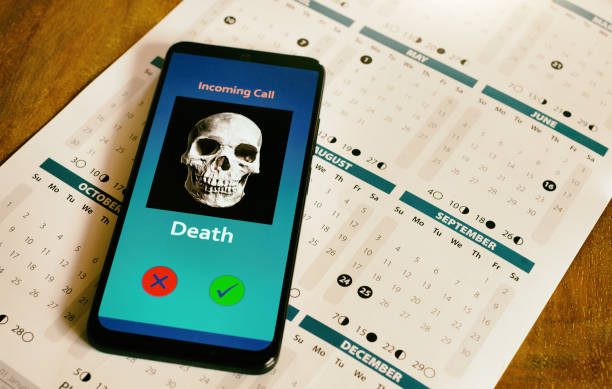
How To Describe Foreshadow Death In Writing (13 Best Ways)
Foreshadowing death in writing is a powerful literary tool that allows authors to weave anticipation, suspense, and emotional resonance into their narratives. It is the art of providing subtle hints and clues that prepare the reader for the impending demise of a character or the unfolding of tragic events, creating a heightened sense of engagement…

How To Describe A Village In Writing (10 Creative Words, Quotes & Steps)
Describing a village in writing is akin to embarking on a poetic journey through a miniature universe, where every word becomes a brushstroke on the canvas of the reader’s imagination. It is an art form that transcends mere description, allowing the writer to transport readers into a world rich with sensory delights, cultural tapestries, and…

- How to Write a Band 6 Creative?

HSC Module B: Band 6 Notes on T.S. Eliot’s Poetry
Full mark band 6 creative writing sample.

- Uncategorized
- creative writing
- creative writing sample

Following on from our blog post on how to write creatives , this is a sample of a creative piece written in response to:
“Write a creative piece capturing a moment of tension. Select a theme from Module A, B or C as the basis of your story.”
The theme chosen was female autonomy from Kate Chopin’s The Awakening (Module C prescribed text).
This creative piece also took inspiration from Cate Kennedy’s Whirlpool .
Summer of 2001
For a moment, the momentum she gained galloping in the blossoming garden jolted, and she deflated like a balloon blown by someone suddenly out of breath. A half-smile, captured by the blinking shutter.
Out spluttered the monochrome snapshot. A bit crumpled. A little too bright.
Two dark brown braids, held by clips and bands and flowers, unruliness constrained. The duplicate of her figure came out in the Polaroid sheltered between a stoic masculine figure, and two younger ones just as unsmiling as their father. The mother stood like a storefront mannequin, the white pallor of her skin unblemished by her lurid maroon blush.
Father told the children that their mother was sick. That’s all. Having nightmares about their grandmother who left mother as a child. “Ran off,” he had said, and his nose twitched violently. “Left a family motherless, wifeless.”
I run, too, the girl had thought excitedly. When she ran, she could see the misty grey of the unyielding lamp-posts, and hear the same grunts and coos of pigeons unable to sing, melodies half-sang, half-dissonant. Why don’t they ever sing? Like the parrots and the cockatoos and lorikeets?
Out spluttered another photograph.
Void of the many distresses as analogous to adulthood, her face brimmed with childlike innocence, untroubled by the silhouettes of her father and brothers.
Spring of 2012
“Can you take a picture for us?”
She was on the other side of the camera, and for a moment she was lost in a transitory evocation of her childhood. The soft blush of the children and the hardened faces of the adults. The forced tightness of their figures. They too looked happy, she supposed, amidst the golden sand and waves that wash the shore.
Away from the flippancy of clinking wine glasses and high-pitched gossip, she felt could almost hear the ticking seconds of each minute, each hour.
She returned the phone to the family.
How still they stood! The unmoving figures on the compact screen. A snapshot of the present that has instantaneously become the past. If only her childhood could extend infinitely to her present, and future, then she would again experience that luscious happiness that seemed to ebb with age. The warm embrace by her mother. The over-protectiveness of her father. How strange it was, to think that she had once avoided both.
But no matter.
She can’t return to the past. All she could do is reminisce about it. It was futile, she knew. The physician had told her so.
“Think about the present!” he had said. “You live too much in the past! Talk to your family! Your husband!”. After a glance at the confounded face, he added, “You grew up with caring brothers, I believe?”.
She nodded.
“Surely,” he elongated the word so that it extended into the unforeseeable future, “they must understand.”
No, they didn’t, she thought. Not after their Marmee left.
She remembered how perfect her family had been, captured undyingly on that monochrome photograph. Her brothers and her, mother and father. Yes, what a perfect family. Oh, how the opened eye of the camera would watch apathetically as they fastened together, to perfection.
It all fell apart five weeks afterwards, as they listened her father’s monotonous voice reading the last remnant of their mother – a note declaring how their perfection had compromised her, been too stifling, just as that Summer’s humidity had been. Wasn’t that what it meant to be a family, she had thought, to let give you to others willingly for the happiness of the entire family?
Absentmindedly, the grown woman picked up a bayberry branch and drew circles upon circles on the siliceous shore. Where it touched, the sand darkened and lightened again as the water rose.
The ultimatum of my life, she proposed to herself, a rebellious dive at sea! Amused by her dramatism, she continued to muse. How simple it would be, washed away and never coming back. Her family now was perfect enough. Big house. Big car. Big parties. Big dreams. But happiness? She thought of the riot of colour and flashing cameras that her husband loved. Oh, how they caused her migraines! And his insistence for her to abandon those childhood passions of hers, strolling amidst sunny afternoons amidst the greenery, only embody their “Marmee” and his “Honey”. How ridiculous!
Her hand halted to a stop.
For a fleeting moment, the continuum of her oblivion terminated, the angular momentum her hand gained by drawing those perfect circles on the shore jolted. She inflated with the sudden realisation of what she had written on the sand.
Short, and incomplete without the usual Jennings that followed it. But her name nonetheless.
Yes, those ephemeral imprints of her name will be washed away by the infinite rise and fall of the tide. But she still watched. So that when the present became the past, she would still have a snapshot in her memory to hold on to.
She knew she could not go, just like her name. Into the ocean and never come back. She could not possibly go like her mother, who when she was eleven, left a family without a mother and husband without a wife. She could not possibly go like her mother, who left a daughter crushed by the milliseconds of perfection that succumbs so soon after the click of a camera.
With a long sigh, she turned back and the sea becoming a reverberating picture of her past. Intangible, yet outrageously glorious…
11th March, 2015
The mother, on her phone, manicured fingernails swiping the screen absentmindedly. Across the room, the father looked concerned at both the inattentiveness of his wife and the sounds of clanking metal emanating from the cameramen.
“We’re ready, Mrs Jennings,” said one of them, “Please get into position for the family photo!”
The opened eye of the camera watched as the family fastened itself together, the rosy-cheeked daughter and son, the unison of the family creating the epitome of perfection. They smiled vibrant smiles, posed jovially at the flashing lights.
But immediately after the click of the shutters, they all fell apart, insubstantial as a wish.
- How our ex-student and current tutor transferred to a Selective School
- HSC Module B: Band 6 Notes on T.S. Eliot's Poetry
- How to Write a Band 6 Discursive?
Related posts
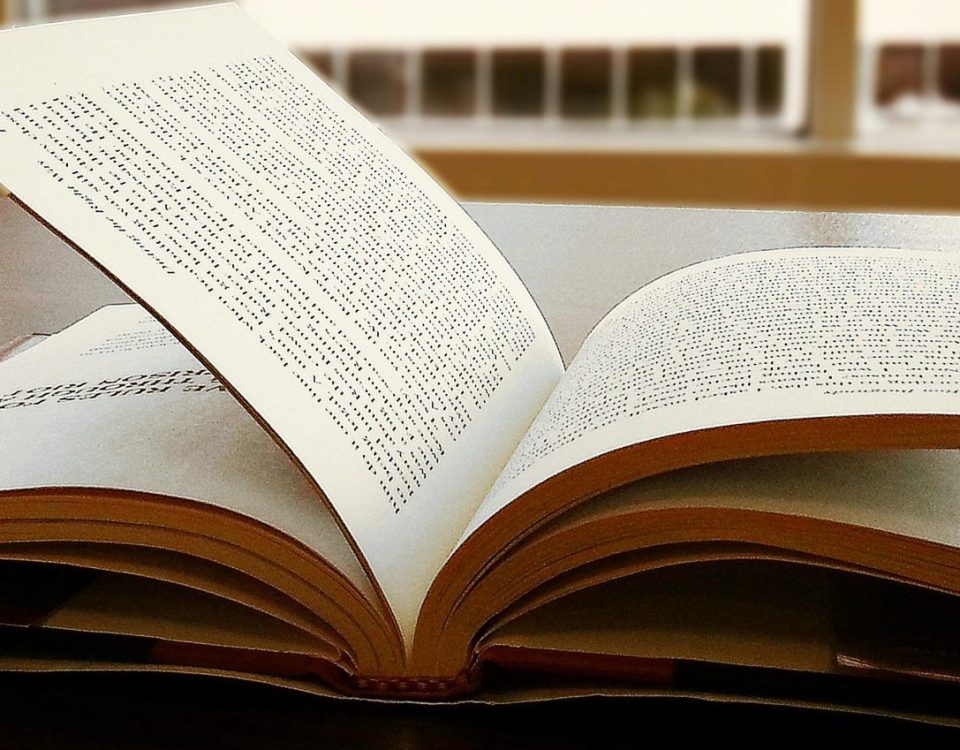
When to start preparing for OC exam and why is it important to prep early
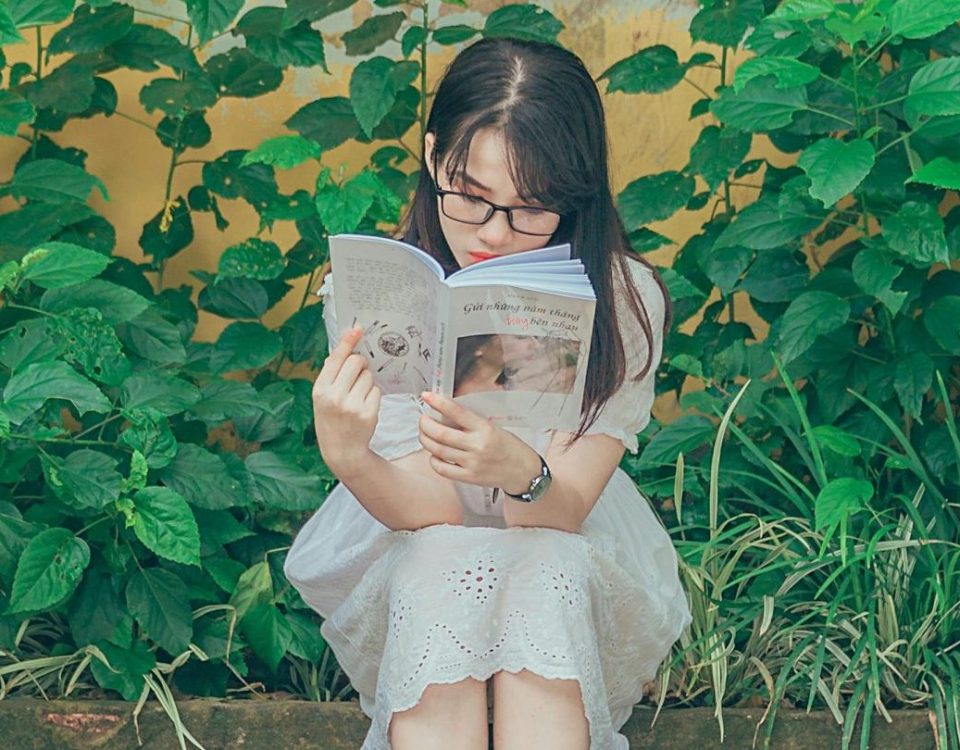
Top Selective School Graduate’s Tips on the English section of the OC exam

JP English Student Successes: How Andy scored 99.95 ATAR and Band 6 in English Advanced

Finished Papers
Customer Reviews
Adam Dobrinich

IMAGES
VIDEO
COMMENTS
Step 1: Develop Your Story Idea. Step 2: Develop Your Character. Step 3: Develop a Setting. Step 4: Develop Your Point of View. Step 5: Using A Formula To Write A Band 6 Plot. Step 6: Pick Your Narrative Type. Step 7: Edit and Proofread Your Piece. Step 8: Adapt your Piece to Exam Stimuli.
This is definitely something you could use in your HSC creative writing. George Orwell's wise words: Orwell wrote an essay, " Politics and the English language, " where he offers six very valuable writing tips:1. Never use a metaphor, simile, or other figure of speech which you are used to seeing in print. 2.
Excel in HSC creative writing with tips and tricks from Concept Education. Unlock your creative potential with expert guidance. VCE. English. Year 7 & 8 Year 9 & 10 Year 11 & 12. ... Once you realise that creative writing, like any other form of non-fictional writing like discursive, persuasive, or formal essays, is defined by a very clear set ...
Writing is like a muscle - you have to exercise it regularly in order to see any growth. Get feedback on your writing and apply it. Rewrite, and get more feedback. Rinse and repeat. Keep repeating this process in order to flex on others as a confident and powerful writer, well equipped for a Band 6 score in Module C.
How to Ace HSC English: Creative Writing I Matrix Education. There's no reason that students can't do well in the Paper 1 Creative section. Here are our top tips for preparing and acing the Creative section.
Worried that you won't be able to compose an adequate narrative and rationale in 40 minutes? Don't worry! In this post, we're going to give you a checklist that will show you how to write a Craft of Writing creative that will blow your marker's socks off.
Isabel's HSC Hacks: Brainstorm A Band 6 Creative Writing Idea. Matrix scholarship student Isabel shares her top HSC Creative Writing tips for brainstorming a Band 6 Imaginative or Discursive idea.
The aim of this lesson is to provide tips on how students can improve their creative writing and maximise their marks in the English exam in the HSC.
For HSC English Module C: The Craft of Writing, Jonny outlines some key tips to help you adapt your discursive piece into an imaginative piece, and how to ch...
Video series for HSC English. This series includes:- Reading your syllabus- Planning assignments- Study notes for HSC English- Reading your texts- Studying e...
Hills like white elephants by Ernest Hemingway. The Lottery by Shirely Jackson. Find an author whose writing style you really like and try mimicking their language and syntax in your own work. 2. FIND YOUR PURPOSE. The marking criteria for HSC Module C creative writing to score a Band 6 requires you to:
Here is an outline of each of these points of view: First Person: The narrator is a character in the story. "I" and "we" are the relevant pronouns. Second Person: You are brought into the story as a character. "You" is the relevant pronoun. Third Person: The narrator is describing the action from an outside perspective.
Resource Description. This is a great guide for all things Craft of Writing - strategies for breaking down the stimulus, using prescribed texts as influences, etc. Just like any section of the English Advanced HSC Exam, Module C accounts for 20 marks. It has been heavily revamped with the new syllabus and is now more of a skills-based module.
Continuously seek to learn and grow as a writer by attending workshops, reading about writing, and experimenting with new techniques. Remember, improving your creative writing skills takes time and dedication. Patience, persistence, and a willingness to learn are key to becoming a better writer.
Adel received an ATAR of 98.60, including a 5th place state rank in English Advanced. In this video she provides her top tips for creative writing in HSC Eng...
Full mark Band 6 Creative Writing Sample. Following on from our blog post on how to write creatives, this is a sample of a creative piece written in response to: "Write a creative piece capturing a moment of tension. Select a theme from Module A, B or C as the. basis of your story.".
Read a Band 6 creative that scored a former student and current English tutor a Band 6. Creative writing is part of the HSC English Paper 1 Area of Study exam. Through a creative writing piece, students are required to demonstrate the concept of Discovery. Here is a sample of a Band 6 HSC Discovery Creative written by a Matrix Graduate in 2016.
HSC Creative Writing: How to Develop a Kickass Character. 6 min remaining. Consider HSC Creative Writing for English Module C to be like a jigsaw puzzle, with all the pieces being characters, plot, setting and voice. Altogether, they create a story. Lack in one and you lack a complete picture. Even though you have less than an hour to create ...
8 Tips for Getting Started With Creative Writing. Last updated: Sep 19, 2022 • 11 min read. Outside the world of business writing and hard journalism lies an entire realm of creative writing. Whether you're brand-new to the craft, a nonfiction writer looking to experiment, or a casual creative writer wanting to turn into a published author ...
The writers of PenMyPaper have got a vast knowledge about various academic domains along with years of work experience in the field of academic writing. Thus, be it any kind of write-up, with multiple requirements to write with, the essay writer for me is sure to go beyond your expectations. Some most explored domains by them are: Healthcare. Law.
Here are 20 Craft of Writing practice questions to see how ready for Module C and Paper 2 you really are!